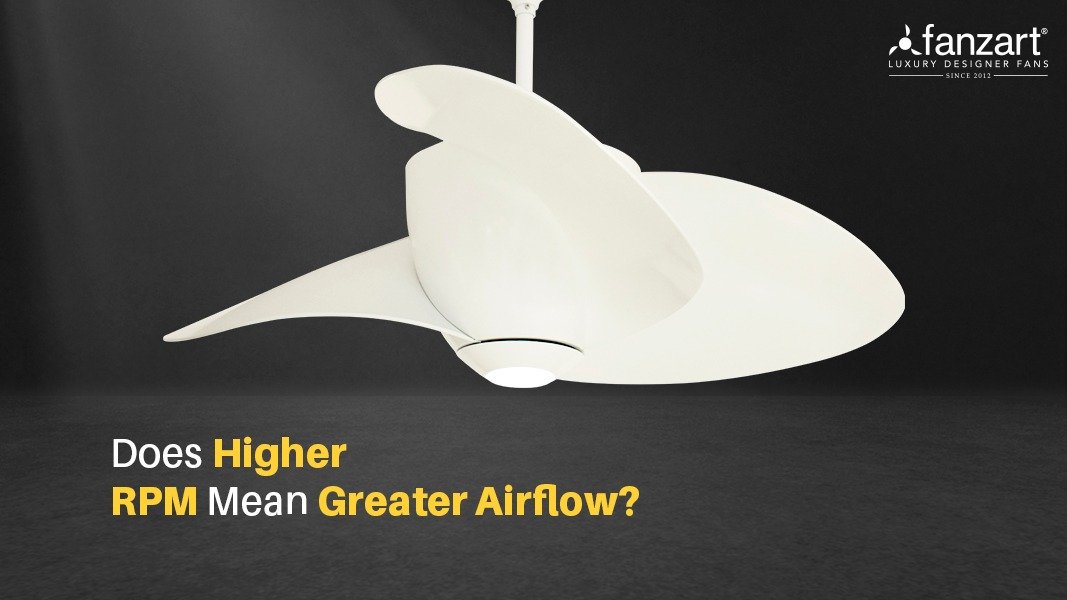Look above and notice how fast your fan blades spin. The general perception is that the faster the fan’s blades spin (RPM), the more air it would displace (CFM). As a principal architect, architect, or interior designer, you might be aware of the relationship that these two metrics share with each other. As a consumer looking for the perfect luxury designer fan in Bangalore or anywhere in India, it is vital to understand the difference between both of these terms. Let the fan experts shed some light on this matter, as some of our Multicolored LED fans would. Read on.
RPM stands for Rotations per minute and refers to how fast the blades of a fan spin at a specific speed. The faster the blades spin-the more air they move, which refers to CFM (Cubic-Feet moved per Minute). However, this is contingent on three vital parameters related to the blades of a designer fan- the Blade pitch, theBlade size, and the Blade width. Fanzart fans have been designed for greater air displacement, with our CFM starting from 6875 and going all the way up to 14,188. The right combination of these 4 parameters, including RPM, enables our unique ‘Whisper Quiet‘ Technology, with most Fanzart Designer Fans under40dB.
The Blade Pitch or the Blade Tilt refers to the angle of the blades that are set as it moves through the air. Visualize it like this, you in a moving vehicle and you put your palm out of the window like wings, to feel the air. You put your palm at an angle of 180 degrees and your palm is cutting through the air like a knife. Right? As soon as you change the angle up or down you feel the force of the air pushing your palm according to the angle you bent it to. Similarly, when it comes to designer fans or fancy fans, the angle is optimized to be super-efficient, so that it cuts through and pushes the air easily, putting minimal pressure on the motor while ensuring that you get that beautiful breeze.
The Blade Span or Blade Sweep combines with RPM to play an important role when it comes to CFM too, just like the Blade Width. The Blade Size is the length of the blade, usually diameter or sweep and determines the area it can cover. Smaller blade sizes for smaller rooms and larger blade sizes for larger rooms. Which is why Fanzart has sizes from 15 inches to 93 inches. It’s a careful combination of art and science, which epitomizes what India’s best and biggest luxury designer fan brand is all about.
What about larger interior spaces like banquet halls or exhibition spaces? It is useful to note that bigger fans do not necessarily need to have the properties of moving more air (CFM) even if they possess large motors. Larger designer fans require a different approach to ensure the optimal usability of their size and blade shape. Our HVLS(high volume low speed) mechanism present in some of our luxury designer fans are specifically built for this functionality. This is the case where the RPM of a fan would be low, but the CFM would still be delivering that breeze experience that our designer fans are known for. Ask us today more about what HVLS is and which of our luxury fans would suit your commercial designer space best.
A smaller technical factor that can influence a good CFM is the ceiling height. You must place your designer fan neither too far from the ceiling nor too close to it. Unless certain types of fans have certain requirements. This is where our innovative solutions come in handy, as our fan experts understand how down rods play a role in high-ceiling homes or interior spaces. If you have a false ceiling, do not worry- we have a solution for that too. Schedule a call with our fan experts to know more.






















































